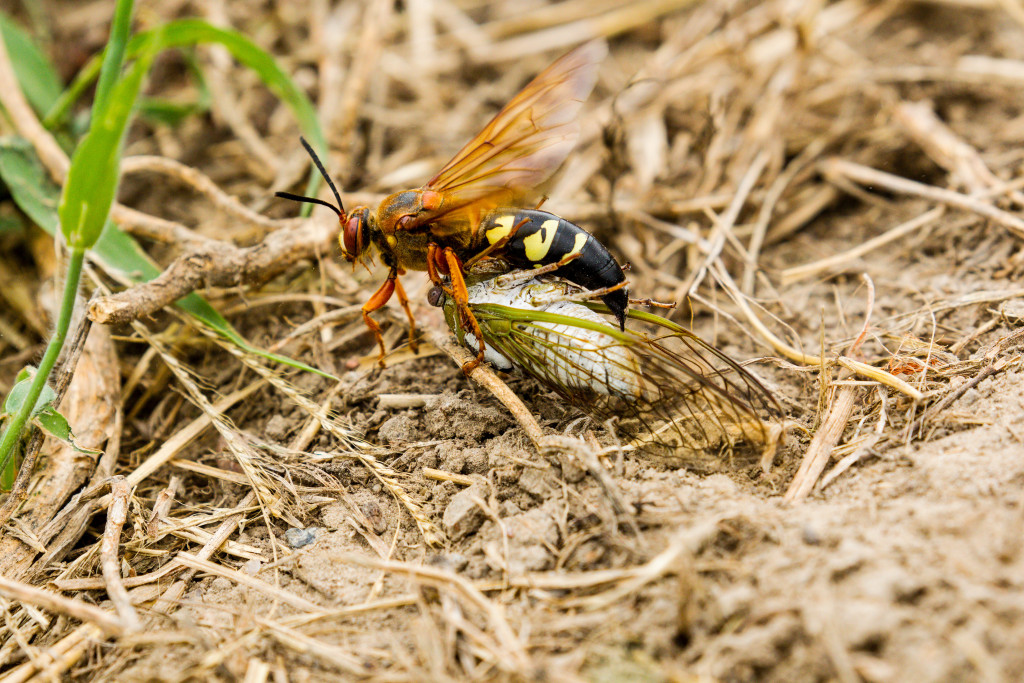
By Julie Geiser
Cicada killer wasps will start emerging from the ground anytime, but these docile wasps only have one thing on their minds: seeking out cicadas.
Found across the U.S., these native wasps start to appear in mid-to-late July through August in Nebraska. Cicada killer wasps are approximately 2 inches long with black and yellow on their abdomens and amber-colored wings.
When you hear male cicadas begin singing to attract their mates, adult cicada killer wasps will start to emerge from the ground, as well. The smaller males emerge first and begin to establish territories near where they emerged. Adult females emerge a week or two later.
Their goal above ground is to mate. The females emit a pheromone that attracts males, and since they only mate with one male, dominant males typically win those rights. Females hold sperm in a storage receptacle called a spermathecal, and before laying the eggs, female wasps will determine the sex of each: Unfertilized eggs become males and fertilized eggs become females.
After mating, females select a burrow site in loose soil around large, deciduous trees. They burrow about 10 inches into the ground, removing soil by backing up the burrow and pushing dirt behind them using “spurs” on their hind legs. Each burrow will have an oval chamber at its end where the females will place a paralyzed cicada and lay an egg on it. Often, several nest chambers are dug, which branch off the same burrow. Dirt from new excavations are used to seal finished chambers.
Both male and female cicadas are caught by female wasps in trees, on the ground or in flight. Once caught, the wasp delivers a paralyzing sting to the cicada and then flies or drags it to the nesting burrow. Female eggs are given at least two cicadas to feed on, while males only receive one, which is why females are larger than males. This move is a daunting task as cicadas can weigh twice as much as female wasps.
After mating and egg laying is complete, both the male and female cicada killer wasps die. Their life span as adults range from about four to 24 days; but their offspring go on to repeat this life cycle every year.
The wasp larvae only take a few days to hatch and then feed for about two weeks on the cicadas their parents left behind. Once done, they spin themselves into a cocoon to winter in the ground; they merge as adults the following summer.
Though these insects may look frightening, they are more interested in finding cicadas and laying their eggs than concerning themselves with humans. Cicada killer wasps typically won’t sting or bite unless provoked, unlike other wasp species.
